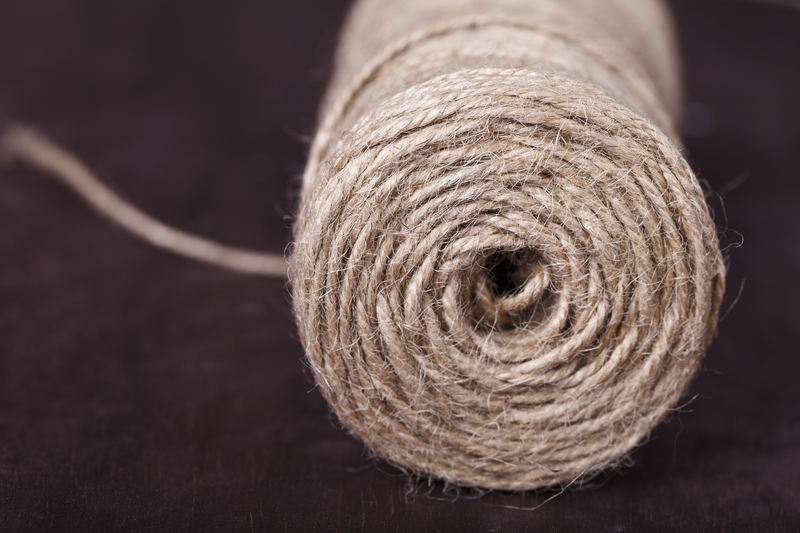Unveiling the Mysteries of Orchid Care
Posted on 22/08/2025
Unveiling the Mysteries of Orchid Care: A Comprehensive Guide
Orchids have long been synonymous with elegance, beauty, and a touch of the exotic. Despite their reputation for being finicky, these stunning plants can be surprisingly resilient with the right care and attention. In this article, we'll unveil the secrets behind orchid care to help both beginners and seasoned enthusiasts achieve thriving blooms year-round.
Introduction to Orchids: Why the Fascination?
The orchid family (Orchidaceae) is one of the largest plant families on Earth, boasting over 25,000 species and more than 100,000 hybrids. Each variety enchants with distinct blooms, fragrance, and growth habits. This astonishing diversity, combined with their mystique, makes proper orchid care an intriguing pursuit for plant lovers.
- Billions of orchid seeds are produced yearly across the globe.
- Some orchids mimic insects to attract pollinators.
- Certain orchid species can live for decades under the right conditions.

Understanding the Orchid's Natural Habitat
To successfully grow orchids at home, it's essential to appreciate their native environments. Most popular types, like Phalaenopsis (moth orchids), hail from tropical rainforests where they soak up humidity and filtered sunlight. Others, such as Dendrobiums and Cattleyas, can be found in diverse habitats, from montane forests to lowland plains.
Key Elements of an Orchid's Natural Environment
- High humidity levels (typically 50-80%)
- Warm temperatures with gentle air circulation
- Bright, indirect light
- Epiphytic growth--most orchids grow attached to trees, not in soil
Understanding these elements helps demystify indoor orchid care and guides enthusiasts to recreate optimal conditions at home.
Choosing the Right Orchid for Your Home
Before diving into detailed orchid maintenance, it's important to select a type that matches your home environment and skill level.
Most Popular Orchids for Beginners
- Phalaenopsis (Moth Orchid) - Known for its resilience and long-lasting blooms.
- Oncidium (Dancing Lady) - Adaptable and cheerful, with bright, prolific flowers.
- Dendrobium - Tolerates a range of temperatures and lights up any space.
More adventurous growers may try Vanda or Cattleya orchids, which demand greater attention to humidity and light.
The Fundamentals of Orchid Care
1. Light: Replicating Nature's Ambience
Light is one of the most critical factors for successful orchid cultivation at home. Orchids generally thrive in bright, indirect sunlight. Too much direct sun can scorch the delicate leaves, while too little prevents blooming.
- East or west-facing windows are ideal for most orchids.
- Use sheer curtains to diffuse harsh sunlight.
- Supplement with fluorescent or LED grow lights during winter or in low-light rooms.
Tip: Leaf color can indicate lighting: healthy leaves are light green, while dark leaves may signal insufficient light.
2. Watering: Finding the Perfect Balance
One of the greatest orchid care mysteries is proper watering. Overwatering is the leading cause of orchid decline, but underwatering can also stunt growth and flowering.
- Water once a week during active growth, less in winter.
- Let the potting medium dry slightly between waterings.
- Use tepid water and avoid getting water in the crown to prevent rot.
Avoid letting roots sit in water. Well-draining pots and media are essential. If in doubt, it is safer to underwater than overwater.
3. Humidity: Recreating a Rainforest Atmosphere
Most orchids prefer humidity between 40% and 70%. The air in centrally heated homes or air-conditioned rooms can be far too dry for optimal orchid health.
- Group plants together to create a humid microclimate.
- Place pots on trays filled with water and pebbles (ensure the pot base sits above the water).
- Mist leaves with distilled or rainwater regularly (but avoid letting water pool in leaf axils).
- Consider a small humidifier for serious collections.
4. Temperature: Mimicking the Tropics
Orchids thrive in temperatures similar to what humans find comfortable, generally between 60-80?F (16-27?C). However, some variation between day and night temperatures encourages flowering.
- Try to maintain a 10-15?F (6-8?C) drop in temperature at night.
- Keep orchids away from cold drafts and direct, hot air from radiators or heat vents.
5. Potting and Medium: The Right Foundation
Unlike many houseplants, orchids require specialized potting media such as bark, sphagnum moss, or coarse perlite. Regular soil retains too much moisture, leading to root rot.
- Repot orchids every 1-2 years or when the medium breaks down.
- Choose pots with ample drainage, such as clear plastic orchid pots or clay pots with side openings.
- Repot after blooming, never while buds are setting or opening.
6. Fertilizing: Feeding for Vibrant Blooms
Orchids are light feeders but benefit from balanced nutrition during active growth. General rule: "feed weakly, weekly."
- Use a balanced orchid fertilizer (20-20-20 or similar), diluted to half or quarter strength.
- Fertilize every other watering during growth, less in dormant periods.
- Flush the potting medium monthly to prevent fertilizer salt buildup.
Advanced Orchid Care: Unlocking Next-Level Growth
Recognizing When Your Orchid Needs Attention
- Dull, wrinkled leaves: check water and humidity levels.
- Brown or mushy roots: likely overwatering; time to repot.
- Persistent lack of blooms: possibly insufficient light or nutrients.
- Yellowing leaves: sometimes normal on older leaves, or could indicate stress.
Inspect your orchids regularly to catch any problems early and resolve them before they escalate.
Orchid Pruning, Repotting, and Propagation
- After the last flower drops, trim flower spikes with sterile scissors just above a node.
- Repot every 1-2 years or if you see roots growing wildly out of the pot.
- Dendrobiums and some other types can be propagated from keikis--baby plantlets that emerge along the stems.
Pest and Disease Management in Orchids
Common orchid pests include mealybugs, scale insects, spider mites, and aphids. Treat pests promptly with gentle insecticidal soap or neem oil. Remove infected leaves and quarantine new plants before introducing them to your collection.
- Monitor for black spots or mushy areas--signs of rot or fungal disease.
- Ensure air circulation to prevent mildew and mold.
Common Orchid Care Myths Debunked
- Orchids are impossible to grow indoors.
False: With basic knowledge and a little attention, most orchids adapt beautifully to indoor life. - Orchids need to be watered with ice cubes.
False: Ice can shock roots! Water with tepid, room-temperature water instead. - Orchids bloom only once.
False: With proper care, many orchids can rebloom annually or even several times a year.

The Joys and Rewards of Mastering Orchid Care
Unveiling the secrets of orchid care is more than a horticultural exercise; it's a rewarding journey into nature's artistry. Orchids teach patience and observation, and their blooms offer a payoff unmatched by most houseplants. By following these guidelines, anyone can transform their orchid's reputation from fussy to flourishing.
Final Orchid Care Tips for Lasting Success
- Be patient. Orchids operate on their own time. Allow them to adjust after repotting or environmental changes.
- Observe regularly. Weekly check-ins help spot problems before they become severe.
- Invest in quality potting media and pots. The right foundation makes a world of difference.
- Enjoy the process! Treat your orchid care routine as a peaceful ritual rather than a chore.
Conclusion: Unlock Your Orchid Success Story
The mystery of successful orchid care is a blend of science, art, and attentive observation. Understanding your orchid's unique needs and simulating its natural environment lays the groundwork for spectacular blooms. Whether you're just beginning your orchid journey or fine-tuning your horticultural skills, embracing these practices will help your orchids thrive--and enchant--all year round.
Ready to unveil more horticultural mysteries? Start with an orchid, and watch as the secrets of the plant kingdom unfold before your eyes.

